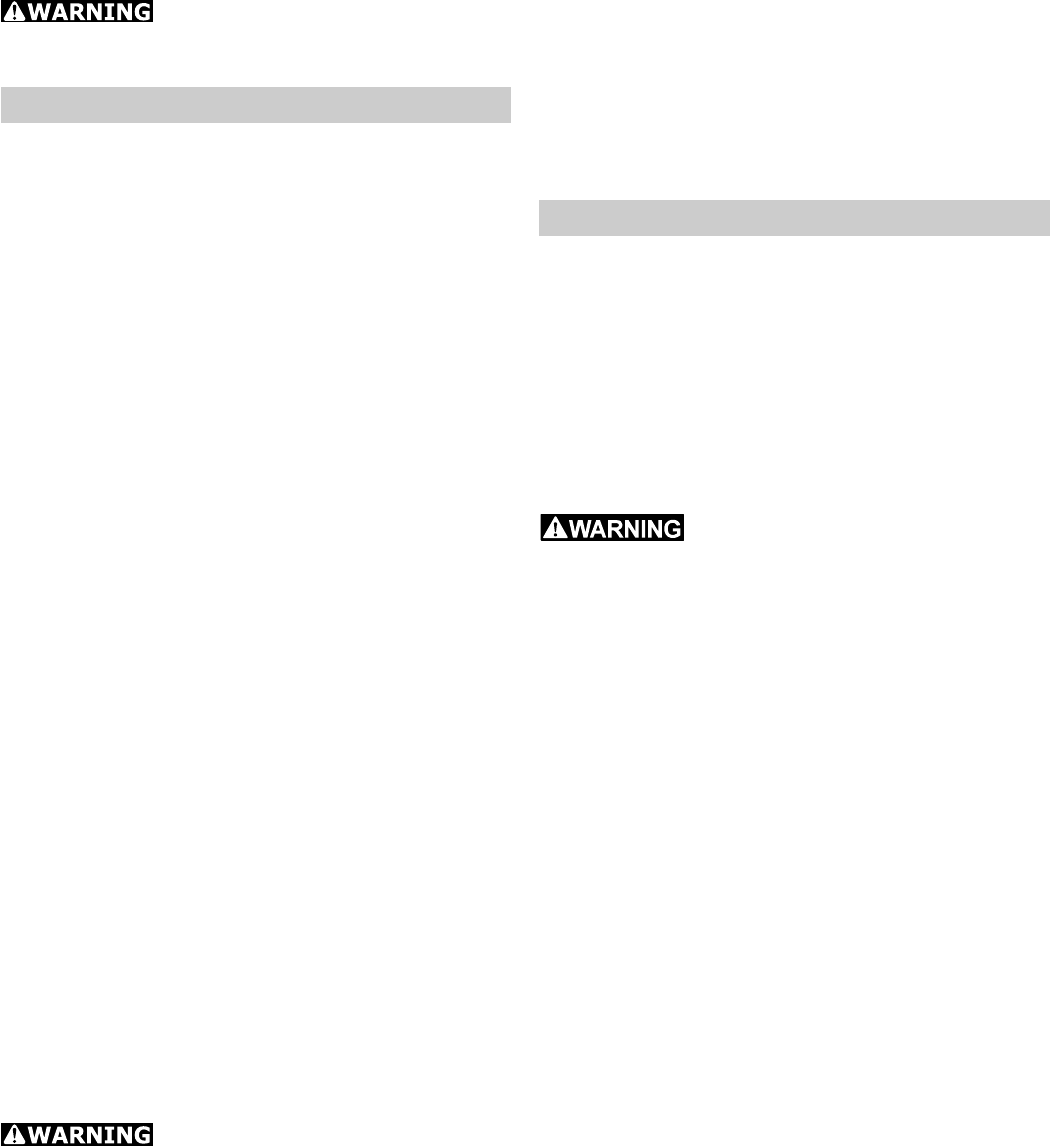
6
An IAS connecting piece (Order No. 454 757)
is available for connecting Festool compressed-
air tools with the IAS system.
To ensure trouble-free functioning of the
automatic cut-in, the operating pressure of the
tool must be 6 bar.
Make sure that the compressed-
air tool is switched off when plugging it in and
unplugging it!
4 Application
A systainer can be fixed on the shelf (1.3) with
the two clamps (1.2). Tools or accessories can
also be stowed on the shelf and in the storage
compartments (1.7, not with CT 22 E).
A hose coupling (1.1, Order No. 487 072) can
be plugged into the opening (1.5). The suction
hose is connected to the tool from above with
the hose coupling. Alternatively, a hose clip
(order No. 452 998) can be fitted for coiling
the suction hose.
The wheels can be blocked by the brakes (2.8),
thus preventing the vacuum cleaner from rolling
away unexpectedly.
The push handle (2.11, Order No. 452 921)
makes the vacuum cleaner easier to move.
Accessories (e.g. vacuum accessories) can be
fixed to the push handle batten (2.9).
An air blast is obtained by inserting a suction
hose in the blast opening (2.7).
4.1 Vacuuming dry materials
Before using the vacuum cleaner to evacuate
dry substances, a filter bag must always be
inserted in the container. Then the evacuated
material can be disposed off easily.
The filter element becomes damp after
evacuating liquids. A damp filter element suffers
more wear and tear if it is used for dry materials.
Accordingly, the filter element should be dried
or replaced with a dry one before dry operation.
4.2 Vacuuming liquids
The filter bag has to be removed before
evacuating liquids. We recommend use of a
special wet filter (Order No. 452 924).
When the maximum filling level is reached, a
level indicator (2.12) automatically interrupts
extraction.
Do not evacuate combustible
liquids!
If foam or liquid escapes, stop work immediately
and empty the dirt container (see 5.4).
4.3 The antistatic system (AS)
Friction in the suction hose causes electrostatic
charges which can result in unpleasant electric
shocks for the operator.
In order to conduct these static charges to
earth, the extraction units are provided with
an antistatic system as a standard feature.
However, antistatic hoses and accessories have
to be used in this case.
4.4 Temperature control
To prevent over-heating, a temperature control
device switches the vacuum cleaner off before
reaching a critical motor temperature is reached
Ù let the vacuum cleaner cool down for about
5 minutes.
If it does not then switch on again automatically,
consult a Festool customer service centre.
5 Operation
5.1 Opening/closing the vacuum
cleaner
- Open retaining clamps (2.2) ,
- Raise upper part (2.4) until support catch
(2.5) engages.
Follow the reverse order to close the appliance.
You must raise the upper part slightly before
depressing or disengaging the support.
5.2 Changing the filter
During the following procedure,
take care not to raise dust more than is un-
avoidable.
a) Changing filter bag
Order No.: CT 22 E: 452 970
CT 33 E: 452 971
- Open the vacuum cleaner,
- Remove the used filter bag (3.4): see printed
text on filter bag,
- Dispose of the used filter bag in accordance
with statutory requirements,
- Thoroughly clean the dirt container (2.10)
and the space (3.1) for suction turbine (wipe
down with a damp cloth),
- Insert new filter bag: see printed text on
filter bag. Important: Press the filter bag
sleeve (3.3) firmly onto the dust extraction
fitting (3.2)!
- Close the vacuum cleaner.
b) Changing the filter element
Order No.: 452 923
- Open the vacuum cleaner,
- Remove the used filter element (2.3): see
printed text on the filter element packaging,
- Dispose of the used filter element in a sealed,
dust-tight bag in accordance with statutory
requirements,


















